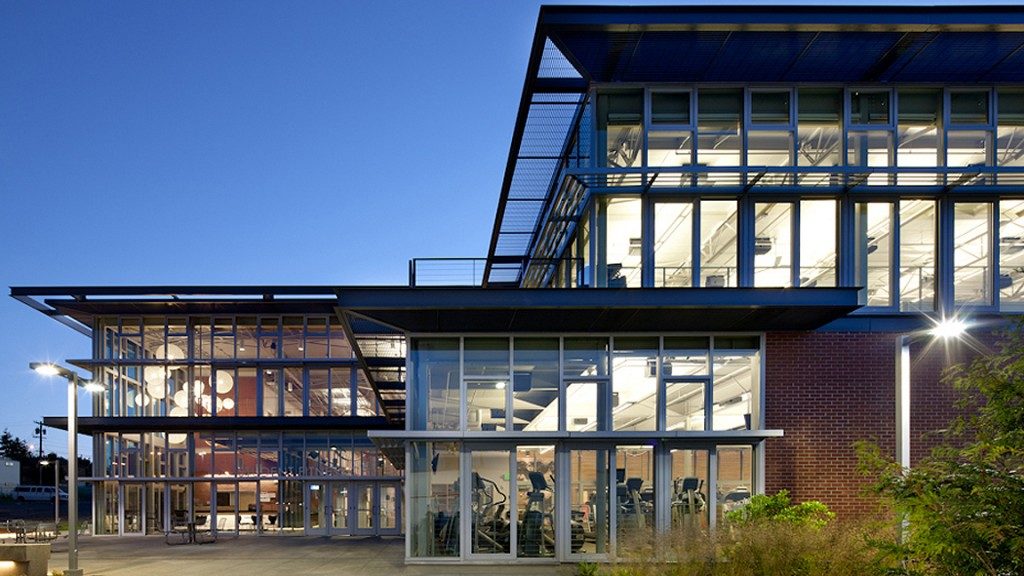
It’s no secret that EvCC has several LEED (Leadership in Energy and Environmental Design) Certified buildings on campus, and that we strive to meet energy efficiency standards wherever we can. The Walt Price Fitness Center, which opened in 2011, earned LEED Gold status, a testament to the sustainably managed construction and operation of the building. But, if you thought that we couldn’t take it any further, you’d be surprised to hear one simple idea that we applied to make this building even greener.
Steve Lyons and Jeremiah Berndt are our campus electricians, and they have spent the last several days swapping out the old compact fluorescent bulbs, or CFLs, in the fitness center with longer lasting and more efficient LED bulbs. To most people, the difference is hardly noticed. This would make almost no significant difference in your household electricity bill if you did the same – although we still recommend using the most energy efficient appliances in your home – but, in a building this large, at nearly 50,000 square feet, the difference is incredible.

Previously, the gym was lit up with a combination of 42 watt, 32 watt, and 26 watt CFLs, which all have an average lifespan of 1-2 years. With over 160 light fixtures, replacing them adds up over time. LED bulbs could last up to ten years depending on which type is used. But, even if we only get half of that with these new bulbs, that’s still twice as long as we would get out of the CFLs. Although the LEDs cost a little more than the CFLs, the investment is quickly paid off by reducing the frequency of replacing burnt out bulbs.
The LED bulbs are ran on 9 watts, which means that they consume less energy than CFLs. On average, using the LEDs could save us about $1,700 per year on utility costs compared to using CFLs. According to Steve Lyons, because the LEDs use less energy and produce less heat as a byproduct of emitting light, there is less damage to the ballasts and fixtures that hold the lights. This results in less maintenance on the fixtures and ballasts, which also saves money. This is harder to predict, but combining all of the cost saving potential for this small scale energy efficiency retrofit could save more than $2,000 annually on lighting, and reducing the amount of energy needed to light the fitness center by up to 75%.
